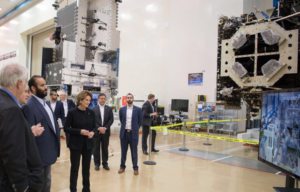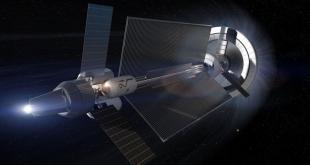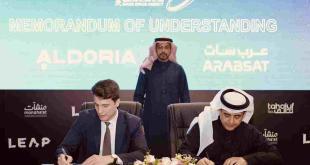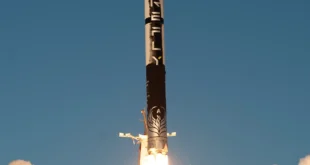
Prince Mohammed bin Salman al Saud, the Crown Prince of the Kingdom of Saudi Arabia, visited Lockheed Martin’s satellite manufacturing facilities in California’s Silicon Valley on 5 April 2018, where the prospect of a Saudi Arabian-Lockheed Martin joint venture to assemble satellites in the desert kingdom was discussed.
Lockheed Martin “wouldn’t necessarily rule out the possibility of supporting satellite assembly activities in the kingdom,” in the future, an anonymous Lockheed executive told U.S. national security news website Defense One on 4 April 2018, prior to the Saudi delegation’s visit.
During the Crown Prince’s visit, Lockheed Martin announced its intention to establish a research and development centre at the King Abdullah University of Science and Technology (KAUST) in Saudi Arabia.
The Lockheed executive also added that the company is “very much committed” to “taking our partnership with the Saudis to the next level.”
These comments follow those of Marilynn Hewson, the Chairman, CEO, and President of Lockheed Martin, who was part of a large American delegation that visited Saudi Arabia led by President Donald J. Trump in May of 2017.
“One of the most important examples of this potential is our central role in the security cooperation agreements signed between the United States and the Kingdom of Saudi Arabia last May,” Ms. Hewson said on 5 March 2018 in a separate media interview.
The partnership between Lockheed Martin and Saudi Arabia, as well as possible ventures in the future, should be viewed in the context of Vision 2030, the bold and ambitious economic diversification and social reform initiative underway in Saudi Arabia, and spearheaded by the young Crown Prince. One of the policies of Vision 2030 promulgates that 50% of defence and aerospace technologies purchased by Saudi Arabia should be manufactured or assembled locally within the kingdom.
Lockheed’s “objective is to demonstrate how Lockheed Martin is providing diverse technology solutions, training and educational expertise for the kingdom’s growing aerospace and defense industry,” the anonymous Lockheed executive told Defense One.
While at the satellite manufacturing facility in Silicon Valley, Prince Mohammed bin Salman saw the, “cutting-edge space technologies that we’re developing for the Middle East,” according to the Lockheed executive.
“They are the largest, most powerful and most advanced commercial communications satellites that we’ve ever built. These satellites will provide high-capacity telecommunications capabilities, including television, Internet, telephone and secure military communications to customers in the Middle East, Africa and Europe,” the Lockheed executive told Defense One referring to ARABSAT-6A and HellasSat-4/SaudiGeoSat-1 currently being prepared for launch later this year.
“We’re continuing to see…real, meaningful progress behind a number of different elements related to the memorandum of intent that was [agreed to] last year,” the Lockheed executive added, referring to the agreement signed by Marilynn Hewson with Saudi officials during her visit to Riyadh with President Trump in May 2017.
At the end of his visit to the Lockheed Martin facility, the Crown Prince signed the last part to be fitted on one of the satellites, writing “above the clouds” in Arabic.
 SpaceWatch.Global An independent perspective on space
SpaceWatch.Global An independent perspective on space




